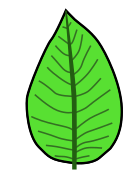Stamp: Autumn. Hedgehog and Acorns. Specimen (France 2019)
Autumn. Hedgehog and Acorns. Specimen (France 2019)
01 January (France ) within release MonTimbrEnLigne. Seasons goes into circulation Stamp Autumn. Hedgehog and Acorns. Specimen face value Lettre No Face Value
| Stamp Autumn. Hedgehog and Acorns. Specimen in catalogues | |
|---|---|
| Colnect codes: | Col: FR-TIM 2019-42s |
Stamp is square format.
Also in the issue MonTimbrEnLigne. Seasons:
- Stamp - Summer. Flowers and a Watering Can. Blue colour missing face value Prioritaire;
- Stamp - Summer. Flowers and a Watering Can. Resdesign face value Lettre;
- Stamp - Autumn. Hedgehog and Acorns. Specimen face value Lettre;
- Stamp - Spring. Flowers in Wellies. Black face value Lettre;
- Stamp - Summer. Flowers and a Watering Can in black face value Lettre;
- Stamp - Winter. Snowman in black face value Lettre;
- Stamp - Spring. Flowers in Wellies face value Lettre;
- Stamp - Summer. Fishing Hut on the Atlantic Coast face value Ecopli;
- Stamp - Autumn. Bonfires and Nuts in black face value Lettre;
- Stamp - Autumn. Pumpkins and Pears in black face value Lettre;
- Stamp - Spring. Birds Nesting. Lemon Background face value Lettre;
- Stamp - Summer Landscape in black face value Lettre;
- Stamp - Summer. Girl in a field of Sunflowers face value R1-AR;
- Stamp - Summer. Sand Castle in black face value Lettre;
- Stamp - Winter. Cat on the Windowsill in black face value Letre;
- Stamp - Winter. Sledge in black face value Lettre;
- Stamp - Summer. Beach Scene. Solitary Blue and White Beach Umbrella face value Ecopli;
- Stamp - Spring. Birds Nesting. Pink Background face value R1-AR;
- Stamp - Summer. Beach Scene. Windscreens face value R1-AR;
|
Data entry completed
46%
|
|
|---|---|
| Stamp Autumn. Hedgehog and Acorns. Specimen in digits | |
| Country: | France |
| Date: | 2019-01-01 |
| Emission: | Personalized - Official |
| Format: | Stamp |
| Face Value: | Lettre No Face Value |
Stamp Autumn. Hedgehog and Acorns. Specimen it reflects the thematic directions:
utumn, also known as fall in North American English,is one of the four temperate seasons on Earth. Outside the tropics, autumn marks the transition from summer to winter, in September (Northern Hemisphere) or March (Southern Hemisphere). Autumn is the season when the duration of daylight becomes noticeably shorter and the temperature cools considerably. Day length decreases and night length increases as the season progresses until the winter solstice in December (Northern Hemisphere) and June (Southern Hemisphere). One of its main features in temperate climates is the striking change in colour for the leaves of deciduous trees as they prepare to shed.
A hedgehog is a spiny mammal of the subfamily Erinaceinae, in the eulipotyphlan family Erinaceidae. There are seventeen species of hedgehog in five genera found throughout parts of Europe, Asia, and Africa, and in New Zealand by introduction. There are no hedgehogs native to Australia and no living species native to the Americas. However, the extinct genus Amphechinus was once present in North America.
A leaf (pl.: leaves) is a principal appendage of the stem of a vascular plant usually borne laterally aboveground and specialized for photosynthesis. Leaves are collectively called foliage, as in "autumn foliage", while the leaves, stem, flower, and fruit collectively form the shoot system. In most leaves, the primary photosynthetic tissue is the palisade mesophyll and is located on the upper side of the blade or lamina of the leaf but in some species, including the mature foliage of Eucalyptus,palisade mesophyll is present on both sides and the leaves are said to be isobilateral. Most leaves are flattened and have distinct upper (adaxial) and lower (abaxial) surfaces that differ in color, hairiness, the number of stomata (pores that intake and output gases), the amount and structure of epicuticular wax and other features. Leaves are mostly green in color due to the presence of a compound called chlorophyll which is essential for photosynthesis as it absorbs light energy from the sun. A leaf with lighter-colored or white patches or edges is called a variegated leaf.



